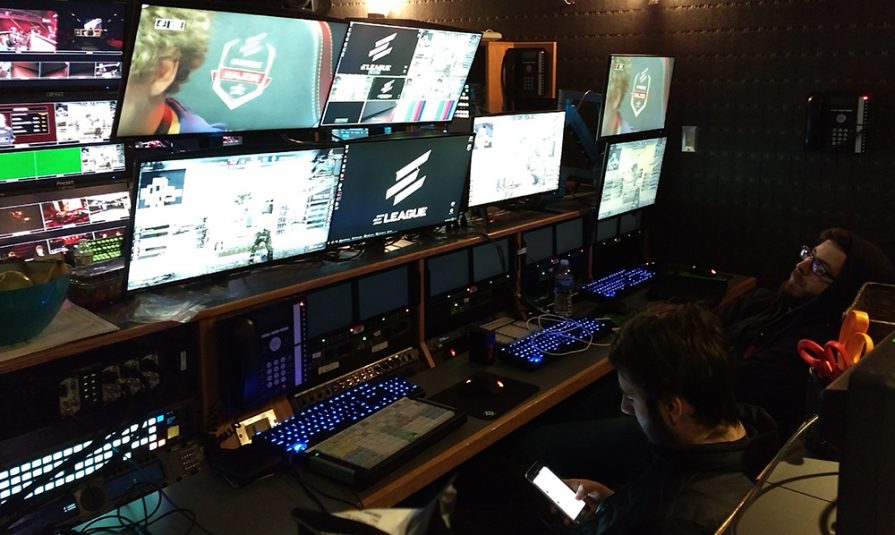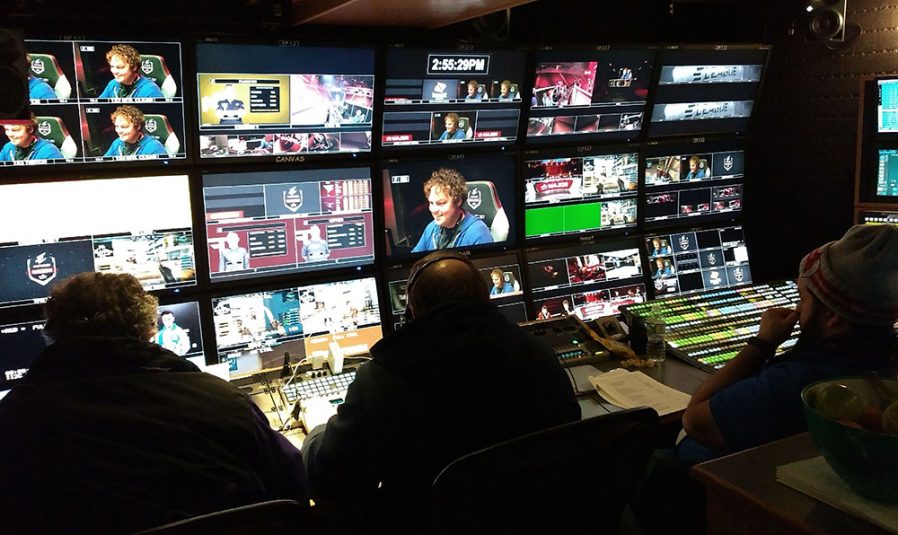Turner Sports Embarks on First-Ever 1080p Remote Production at ELEAGUE Major: Boston
The operation takes a broadcast approach to live streaming
Story Highlights
Fresh off the announcement of an expanded live-streaming deal with Twitch, Turner and IMG’s ELEAGUE will host the conclusion of the first CS:GO Major Championship of 2018 —The ELEAGUE Major: Boston — live from Boston University’s Agganis Arena this weekend. The event, which is being streamed live on Twitch, isn’t just one of the largest ELEAGUE productions to date for the Turner Sports operations team; it also marks Turner’s first end-to-end 1080p live remote production to date.
“This is the first full 1080p remote we have ever done, and it should be a really exciting viewing experience for the fans,” says Chris Brown, senior director, tech ops, Turner Sports. “That was one of the requirements from [CS:GO game developer] Valve because gamers have come to expect looking at shows like this in 1080p. In addition to [the Twitch live stream], there are numerous 1080p displays that have to be fed at the venue, so it is a pretty big [undertaking], but we’re ready for it.”
Inside the Truck: TS2 at the Heart of Turner’s 1080p Show
To create the 1080p production, Turner has rolled in NEP’s TS2 mobile unit (A and B), which serves primarily as its East Coast NBA game truck. Turner and NEP made a handful of modifications to make the truck 1080p-capable, most notably increasing the number of Ross Video Xpression graphics systems to six.
“TS2 will be the heartbeat of our 1080p production,” Brown explains. “We are going to have 1080p playback for graphics, and that is a bit of a challenge because doing 1080p cuts down on our playout-channel count. So we have a couple more Xpression [graphics systems] than we normally would. We will have some legacy 1080i content, including one EVS machine in 1080i that will get upconverted to 1080p for all those replay elements.”
On top of producing a 1080p show for the Twitch live stream, Turner has helped upgrade the in-arena control room at Agganis to 1080p-capable for the event.
“One other significant challenge was integrating the in-arena control room with the primary production in order to share resources for a seamless 1080p, end-to-end production,” says Brown. “Pulling together and verifying that all of the edge equipment — fiber converters, monitors, cables — are 3G-compliant has raised the level of detail needed in planning this event.”
In addition to the streaming production, PGL, which handles the event-organization aspects of ELEAGUE, will be located on the PT bench of the A unit.
The TS2 B unit will house a variety of operations for Turner’s production: transmission (six paths leaving Agganis, one path returning), graphics, design EFX, and IT. Turner is splitting a 3-GB data fiber pipe from Level 3 across 10 VLANs, supporting vendors, gameplay, administrative networks, graphics, design EFX, and all file-based workflows for edit operations in Atlanta and New York.
“The other interesting part has been bringing the gaming culture along into the world of television broadcast and how we do shows,” Brown notes. “[In Boston], it’s all streaming on Twitch, but we’re using the same techniques that we would if this was on TBS or any other network; it’s just a different outlet.”
Covering the Action Inside Agganis: Stage Moves to Center Court
Turner will deploy 12 broadcast cameras to cover the action inside Agganis Arena, including two jibs. In addition, 12 Marshall POV cameras will cover the players along with a down-the-line camera to cover each team. Although coverage of the players is important to tell the story, live esports coverage chiefly revolves around the gameplay itself and replays, making the 1080p enhancement all that more important.
“That’s what people are tuning into it for; they want to see the actual gameplay,” says Brown. “That’s why we have replays baked right into the gameplay. And that’s where the 1080p replays will make a big difference, because, when you can slow that down and see gameplay in slow motion in 1080p, it’s going to look beautiful. Being able to do that out on the road, I think, is a big step for us.”
For the first time at an ELEAGUE esports remote, the stage will be in the center of the arena rather than on one of the ends. As a result, the traditional back-of-house operations — from sound, lighting, and screens to gaming support, server administration, and in-arena talent — will be located along the dasher board.
“Having the gameplay in the middle with fans around it creates some interesting challenges, because there are several features or components related to servicing the gameplay that we normally house backstage,” Brown points out. “Now they will be side-stage and won’t be as hidden. But that’s all being worked out, and it should create a dramatic experience for the people that are inside the arena.”
The Evolution of ELEAGUE Remotes: Sports and Entertainment Collide
This weekend’s ELEAGUE Major: Boston final — eight of the initial 24 teams face off in a single elimination bracket, playing best-of-three map matches until a victor emerges — represents Turner Sports’ fifth ELEAGUE remote production. With five remotes under his belt, Brown says the most significant operational challenges often come as a result of balancing the needs of the in-venue entertainment event and the live stream/telecast while maintaining the integrity of the competition itself.
“When you’re talking about the challenges, it’s as much about the show presentation [in-venue] as it is gaming itself,” he says. “We are serving the fans that come out to watch in person as well as the fans watching on Twitch. We’re looking at both, so it’s an entertainment and sporting event kind of wrapped up in one. We’ve got to get all these displays fed and keep the crowd informed and entertained with graphics and game switching, and then, on top of that, we’re also covering the game itself. So that’s been interesting.”


